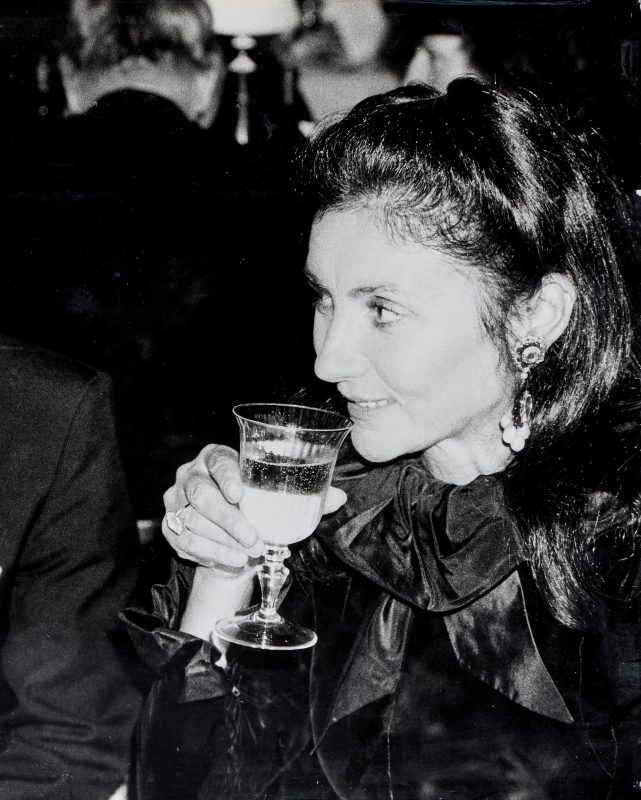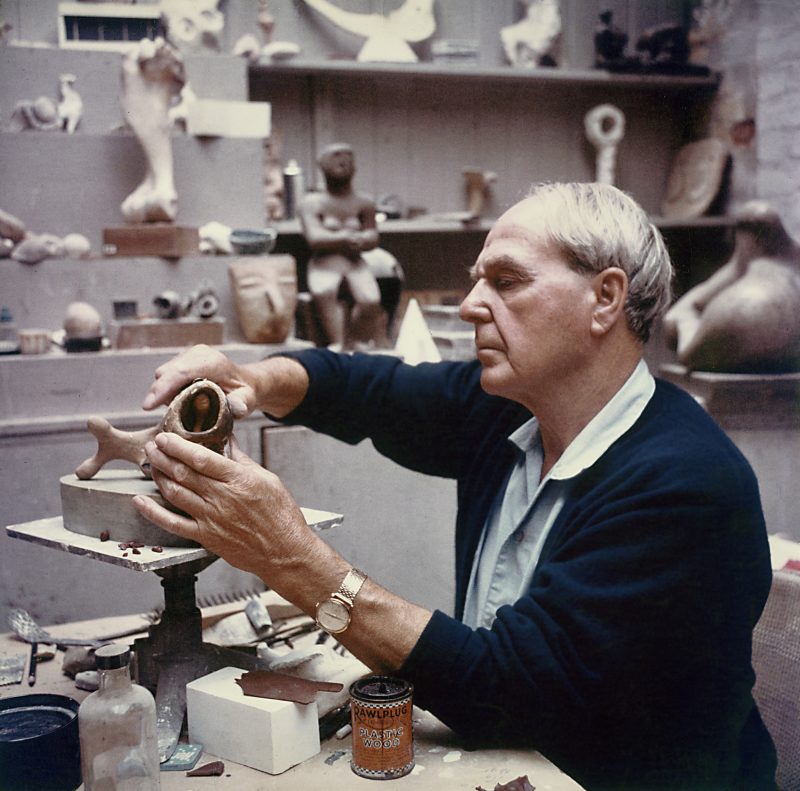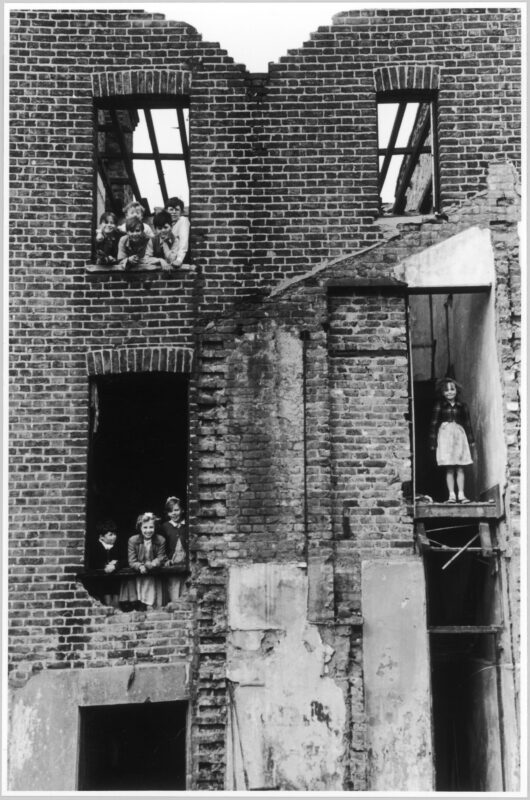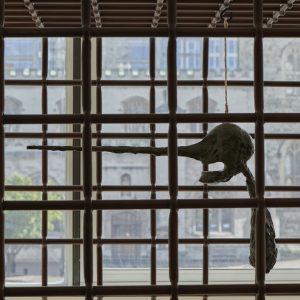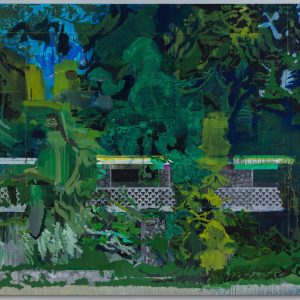New York, Venice… Petersfield? Peggy Guggenheim is famously associated with many of the world’s great cities but she also spent five transformational years in the suburbs of London near Petersfield just before the Second World War.
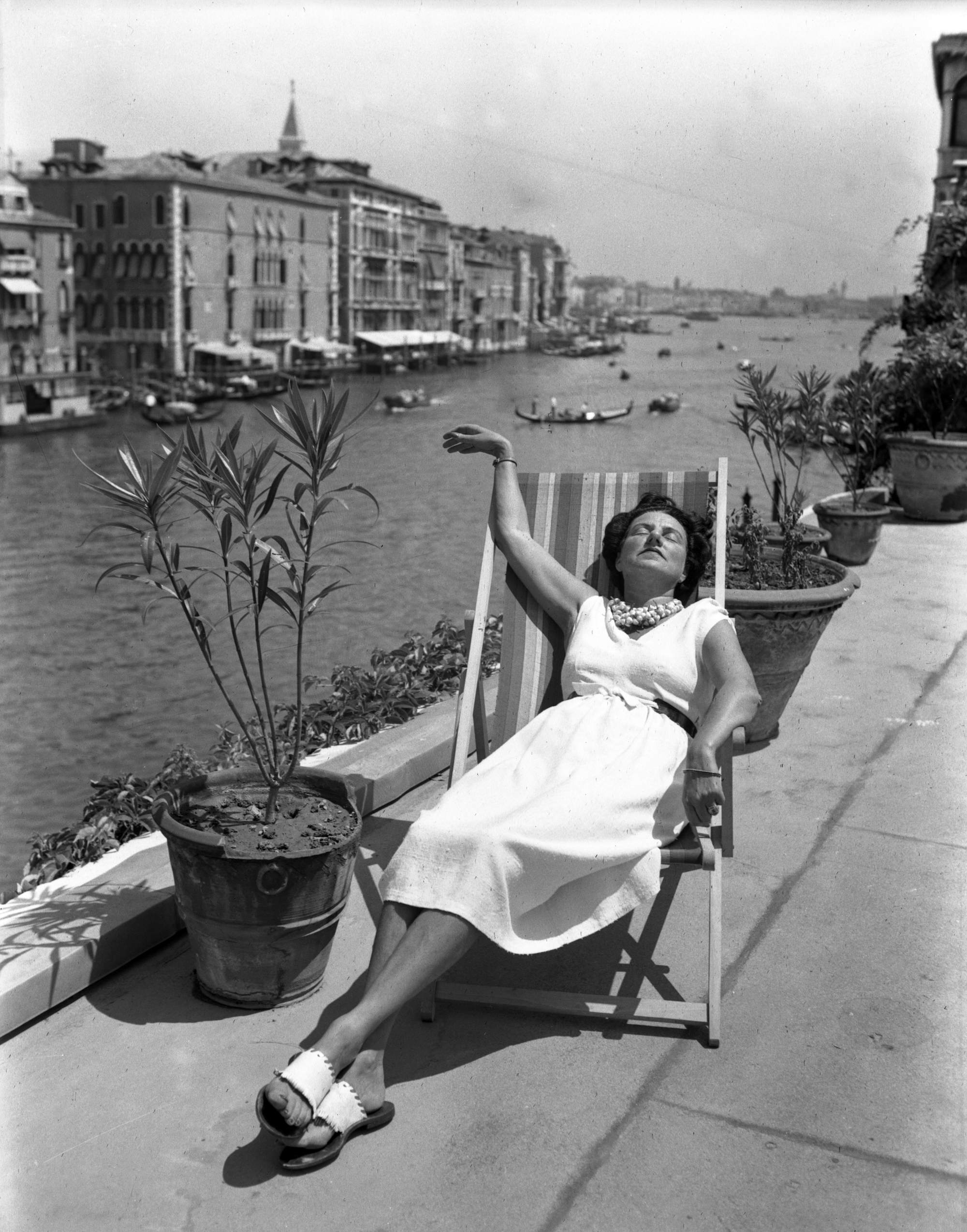
A new exhibition at the recently renovated Petersfield Museum and Art Gallery tells the story of those five years with 15 works and archival material from the Peggy Guggenheim Collection Venice and loans from the Tate, The Hepworth Wakefield, Farleys House & Gallery, National Trust, Bristol Museum & Art Gallery and more.
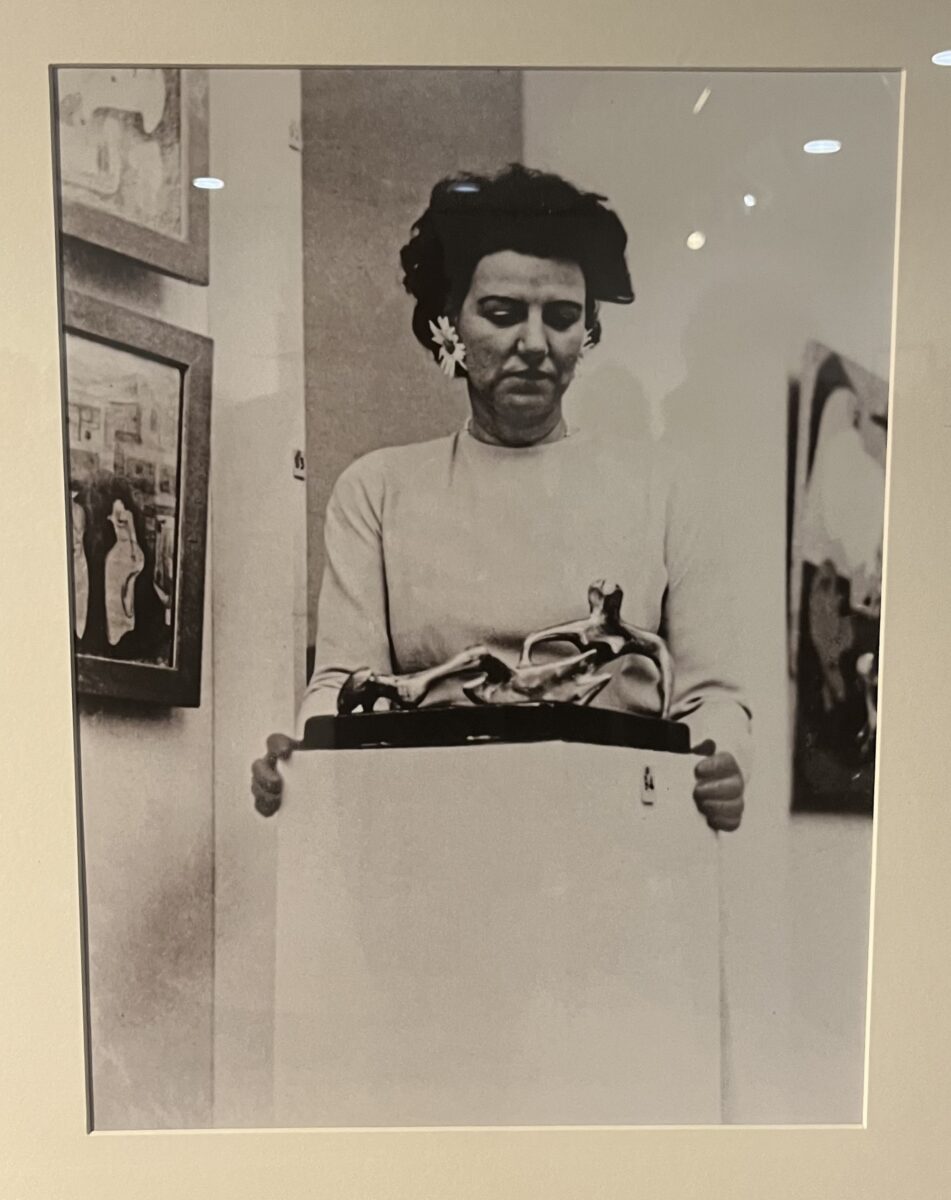
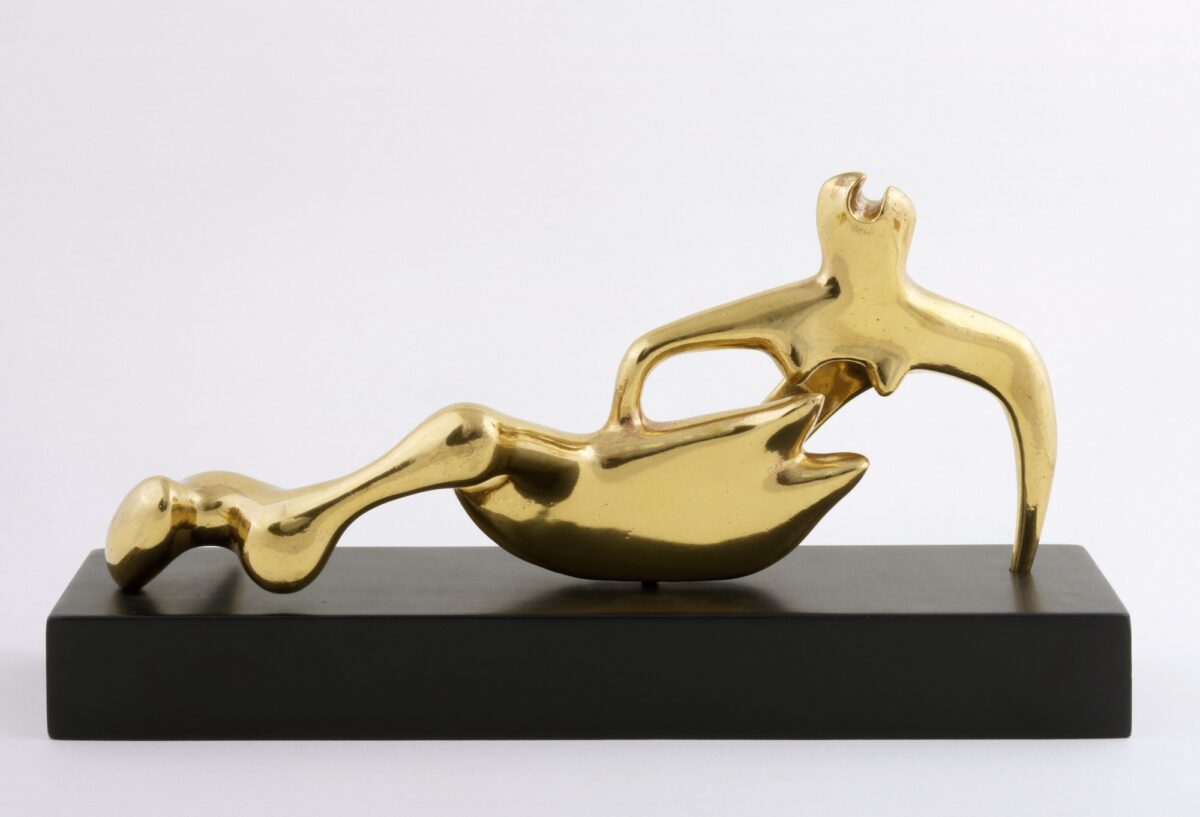
Showcasing artists such as Henry Moore (1898-1986), Yves Tanguy (1900-1955), Max Ernst (1891-1976), Jean Arp (1886-1966) and John Tunnard (1900-1971), alongside fashion and photographs including those by Lee Miller (1907-1977), Peggy Guggenheim: Petersfield to Palazzo gives visitors an extraordinary insight into a life lived in pursuit and celebration of art.
Exploring the literary, artistic, and intellectual figures with whom Guggenheim interacted, the fascinating untold story of her life in the town and neighbouring West Sussex is revealed detailing this early chapter in her career to discover and champion so many world-renowned artists.
After inheriting her share of the family fortune following the death of her father on the Titanic in 1912, Guggenheim first worked as a clerk in a New York bookshop before travelling through Europe, where she met the Parisian bohemians and sat for artists such as Man Ray’s Portrait of Peggy Guggenheim (1924).
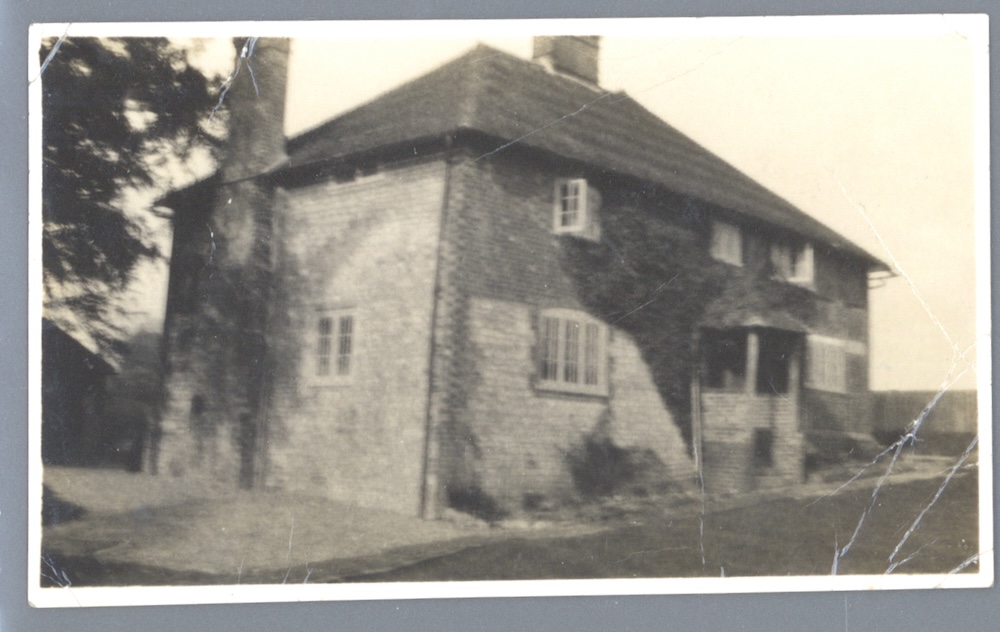
Eventually she settled in Hampshire and bought Yew Tree Cottage, situated on the road between South Harting and Petersfield, partly because of a love affair with publisher Douglas Garman. In her own words, these became her most “domestic years” where her children attended local schools and prompted a search for a new sense of purpose as an art patron, gallerist and collector that would define the rest of her life.
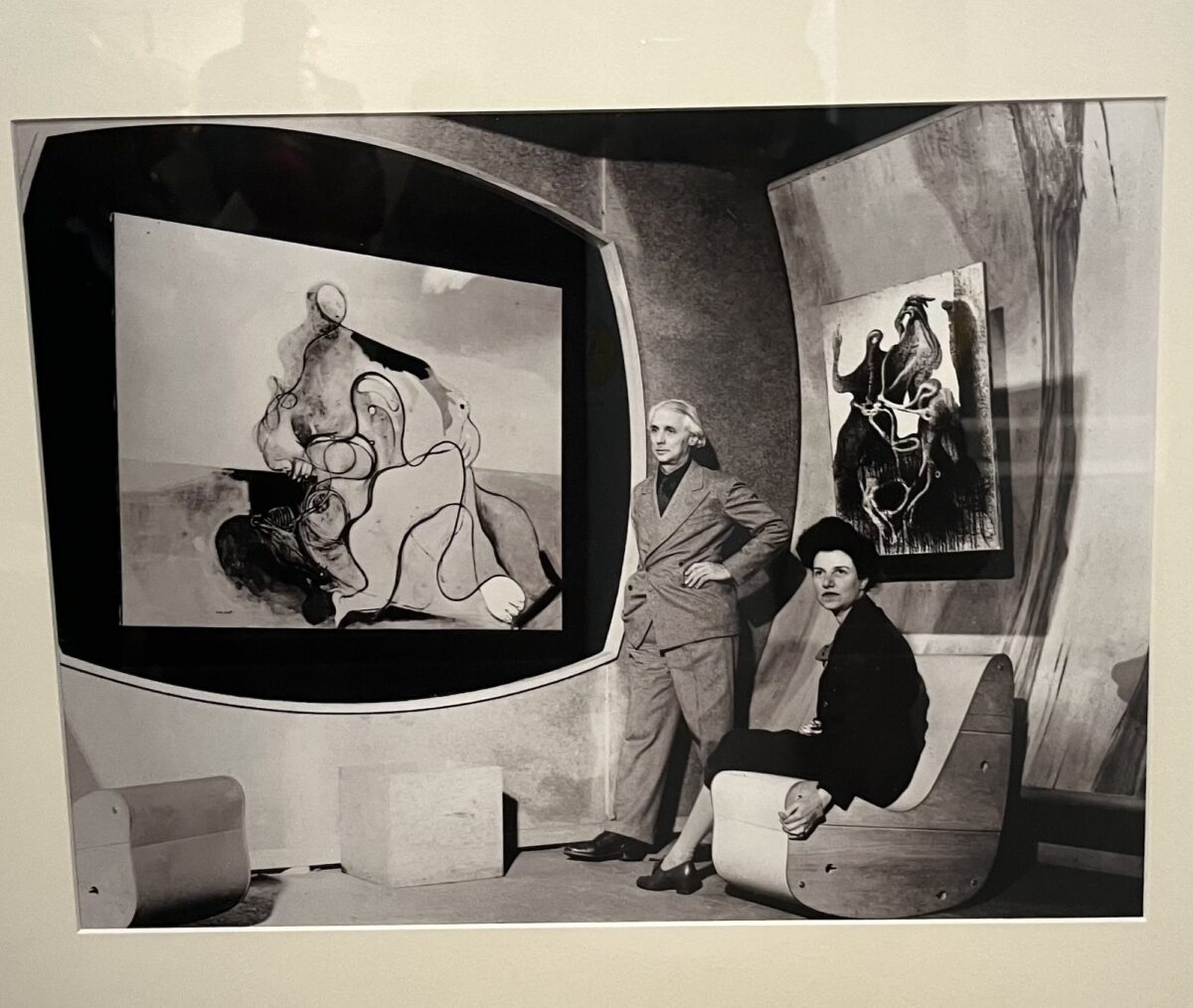
In 1938, she opened the art gallery Guggenheim Jeune in London, significantly influencing the course of art in the second half of the 20th century, and concerns over the political situation in Europe meant that the Gallery works were for a time housed at Yew Tree Cottage. The Second World War ended plans for a modern art museum in London, and instead this was eventually realised in New York. Ultimately, she returned to Venice with her collection and made Palazzo Venier dei Leoni her home for the next thirty years, frequently opening it to the public until her death in 1979. She had said that if she couldn’t live in Venice, she would have chosen to return to the English countryside.
At first, the exhibitions at Guggenheim Jeune focused on cubist, surrealist, and abstract works by exiled European artists. Yves Tanguy was a friend and occasional lover who would stay at Yew Tree Cottage, sometimes with his wife who was unaware of the affair. Here, he carved a ring for Guggenheim from rosewood grown in the garden. Accompanying this ring in the current exhibition at Petersfield will be two untitled works depicting his surrealist structures, the result of a free association technique that channelled the unconscious mind. One of these works is a pencil and feather work that was drawn at the Cottage and which Guggenheim believed herself to be the subject.
Her first ever purchase was a bronze sculpture by the dadaist and abstractionist Jean Arp (1886 – 1996) titled Head and Shell (Tête et coquille) (1933, not in the exhibition), a polished brass work that is made of three distinct parts. It was even the subject of a debate in the House of Commons when British customs refused to allow it and several other works to enter the country, not classifying them as works of art, which provoked a row between the old guard of the art establishment and individuals like Guggenheim as a champion of the modern. Sculpture to be lost in the Forest (1932) showcases the signature smooth surface and emblematic contours that Arp became famous for. Because of his association with Guggenheim, the pioneering artist of the abstract movement stayed in Petersfield for a week and was reportedly enamoured by its little churches.
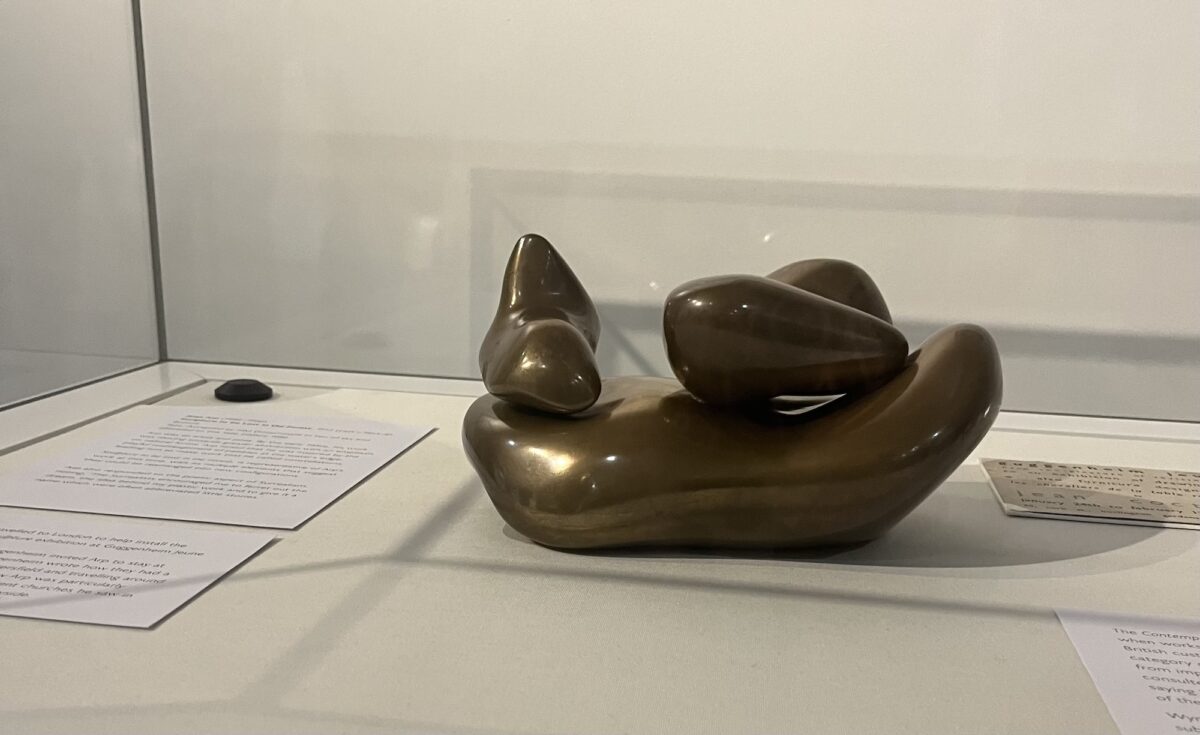
She was also an acquaintance of Henry Moore and light-heartedly claimed to have been an influence on his miniatures. Following a well-received display of a reclining figure at the gallery, Guggenheim told the artist of her regret that there was no room for one at Yew Tree Cottage. When Moore subsequently showed her his new small-scale sculptures, she jokingly claimed they were the result of her protestations. A small-scale Reclining Figure (1935, cast 1946) is included in the exhibition.
A champion of women artists, the exhibition includes Sycamore Leaf (1939) by Danish artist Rita Kernn-Larsen (1904–1998) depicting a surrealist landscape with a huge leaf looming over a brilliantly white organic figure, signifying growth and reproduction. Guggenheim was instrumental in bringing Kernn-Larsen to a wider audience, giving her a solo show in London exhibiting 36 of her paintings, seeking to redress some of the gender imbalance of Surrealist exhibitions of the time. When visiting the studio of one of its leading proponents, Max Ernst, Guggenheim instead bought a work by Leonara Carrington, the first ever work the artist sold. The Horse of Lord Candlestick (1938, not featured in the exhibition) depicts strangely deformed horse figures under a night sky.
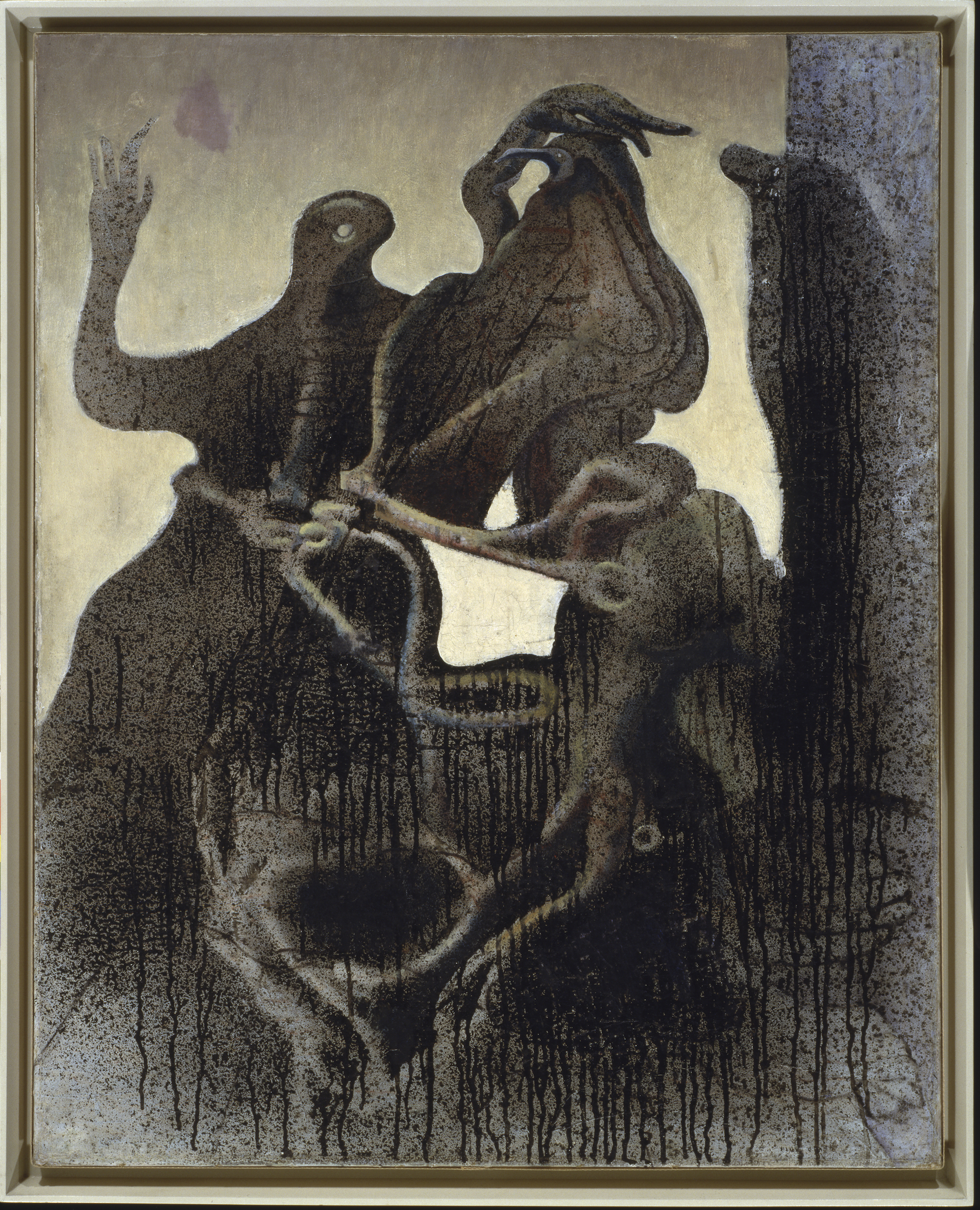
Guggenheim’s personal life is entwined with her collection and Ernst would play a pivotal role in her life, eventually becoming her second husband. Even though the marriage only lasted 5 years, a number of Ernst’s works entered her collection. Zoomorphic Couple (1933) displays his fascination with bird-like figures, where a single-eyed form emerges to extend a caressing hand towards an avian form.
Ernst was at the forefront of new experimental techniques and one such artist who was influenced by this was fellow collector Roland Penrose, another lover of Guggenheim’s. Penrose also experimented with diverse sources and created a series of postcard collages while on holiday. These works included materials such as tickets, string, and newspapers and one such work, Magnetic Moths (1938), will be on display.
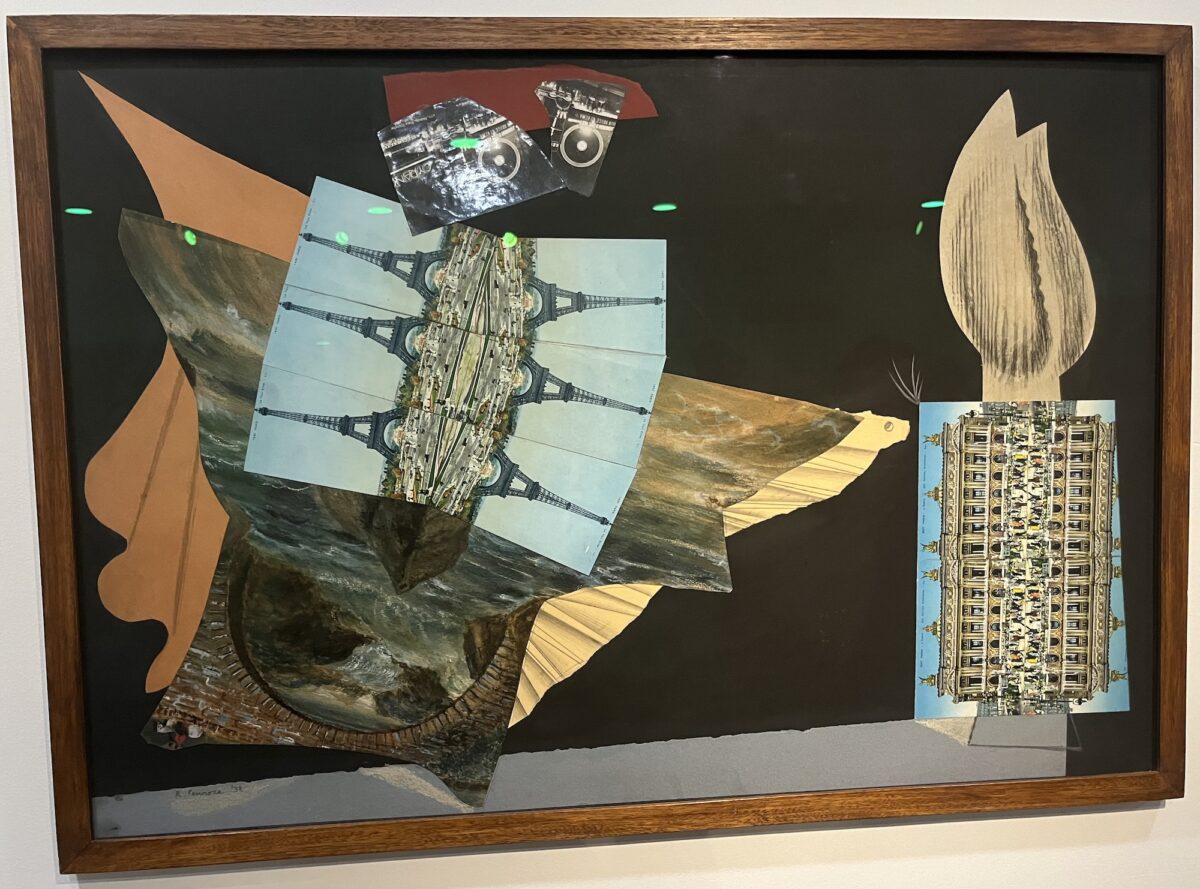
A keenness to bring artwork to a wider public can be seen in her championing of British artists who were sometimes at odds with the critics of the time. John Tunnard visited Guggenheim to show her his strange, undefined landscape works, and she immediately saw the potential. Pi, Spring (1941) is a work depicting a Greek letter and geometry in an ambiguous image, perhaps influenced by his own interest in jazz, which can be seen in the show.
Other artists who worked between the borders of surrealism, cubism and abstract expressionism were the master printer Stanley Willian Hayter and etcher Julian Trevelyan, who both displayed work in Guggenheim’s last exhibition at the London gallery. On display will be Hayter’s Combat (1936), a large etching that uses the Spanish Civil War as its subject, depicted through an assortment of limb-like shapes, and Trevelyan’s Symbols of Growth (1936), demonstrating his innovative style that combines various subject matter from tree roots and pipes to pyramids and fish.
This exhibition is a unique opportunity to bring home a local story about the fascinating woman, Peggy Guggenheim, who defied the conventions of her time and created a modern art collection and museum that captured the spirit of the 20th century. I am immensely proud that as an organisation, with the support of our local community, we can present this compelling exhibition and, for the first time, showcase works by European and British modern artists in our newly renovated galleries.
Louise Weller, Head of Collections and Exhibitions at Petersfield Museum and Art Gallery
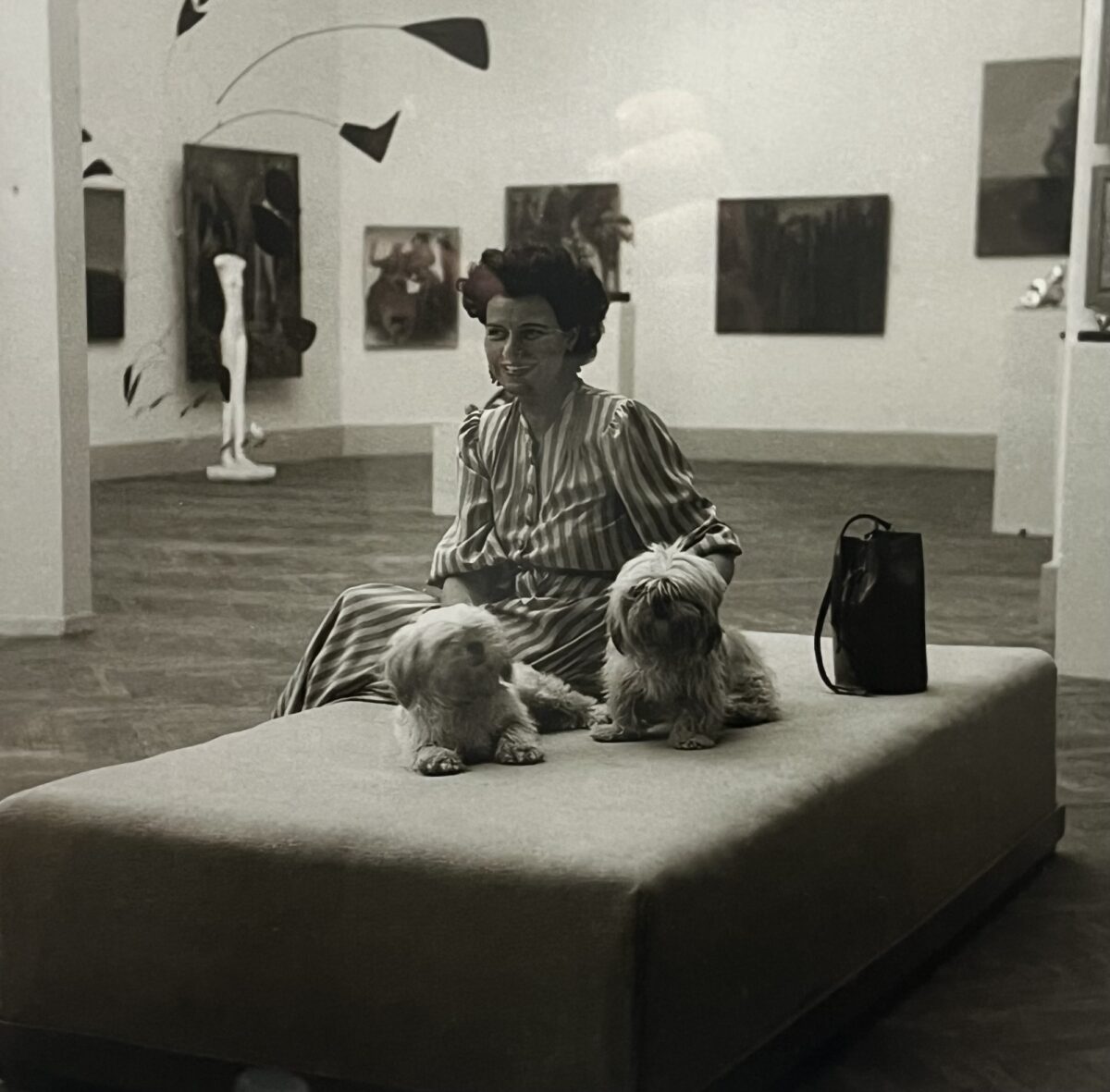
Peggy Guggenheim: Petersfield to Palazzo, 15th June – 5th October 2024, Petersfield Museum and Art Gallery
The loans are supported by the Weston Loan Programme with Art Fund. Created by the Garfield Weston Foundation and Art Fund, the Weston Loan Programme is the first ever UK-wide funding scheme to enable smaller and local authority museums to borrow works of art and artefacts from national collections.
Petersfield Museum and Art Gallery is an accredited, independent museum and registered charity. Established in 1999, it has recently undergone a £4 million redevelopment, supported by the National Lottery Heritage Fund. A rare example of a restored Victorian Justice Heritage site, its permanent collections include an Archaeology Collection and Social History Collection relating to Petersfield and the surrounding area, the Flora Twort Art Collection, a Photography Collection (including the Don Eades Photographic Archive) and a Fashion and Textiles Collection (including the Bedales Historic Dress Collection), as well as a Reference Archive. The Flora Twort Gallery is a dedicated art gallery with an ambitious fine art and contemporary craft exhibition programme and an inclusive public programme. It is also home to the Tim Wilton-Steer Collection of works by and about the poet Edward Thomas, housed in The Edward Thomas Study Centre. For more information visit www.petersfieldmuseum.co.uk / Facebook ‘petersfieldmuseum’ / Instagram @petersfieldmuseum / X (formerly Twitter) @PfieldMuseum
